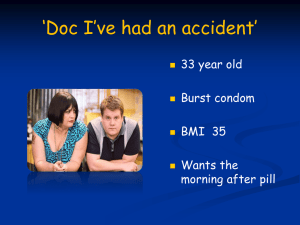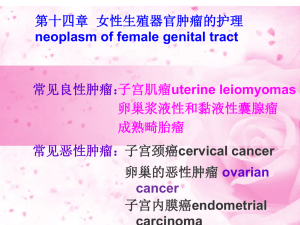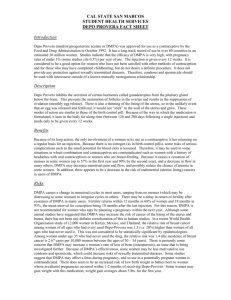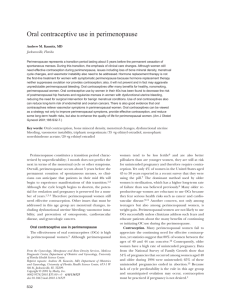Roke
advertisement
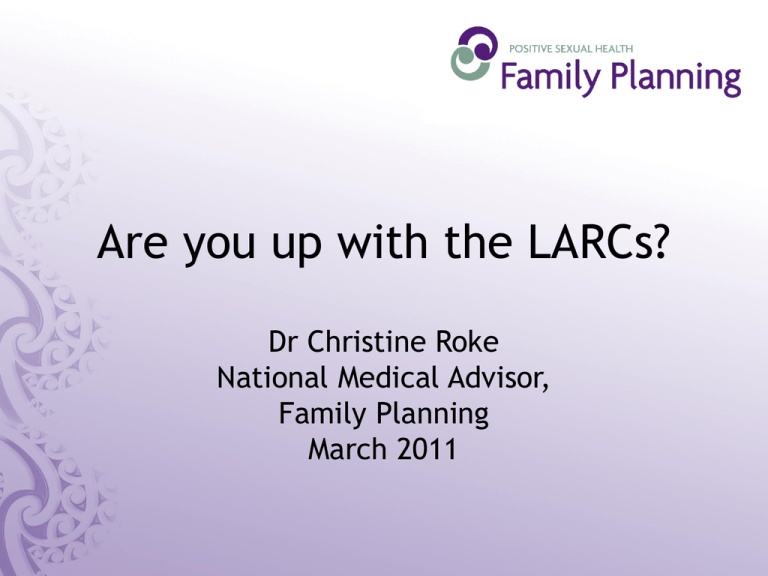
Are you up with the LARCs? Dr Christine Roke National Medical Advisor, Family Planning March 2011 Long Acting Reversible Contraception - LARC • Action less often than monthly • All less than 1% failure rate Long Acting Reversible Contraception - LARC • Depo Provera injection • Intrauterine contraception • Implants Longacting contraception Why? • Methods that require something with every act of sexual intercourse or need to be taken every day have higher user failure rates • Combined pill has about 3% failure rate per year in every day use and 8% in first year of use • Women have first baby in NZ at about 30 • So average woman has more than 10 years contraceptive use before first baby • About 1 in 3 may therefore have an unintended conception in that time • Average woman has less than 2 children • So many years of contraception required when family complete with possible contraceptive failure Depo Provera • Problem with women returning on time for subsequent injections • Now internationally recommended that “late” injection is more than 14 weeks since last injection • Still schedule next appointment for 12 weeks Possible side effects • Most don’t put on weight • Most don’t have mood changes Depo Provera and bone density • Depo Provera may reduce bone density by 5 – 7% over the first 2 years of use – it then plateaus • Caused by suppression of oestrogen • When Depo Provera discontinued, regain this loss of bone density over next few years Bone density • Maximum increase in bone mass age 1114, some sites reach peak bone mass by 18, others later • Reduced in anorexia nervosa, exerciseinduced amenorrhoea etc • Increased in Maori and Pacific nation people Depo Provera use • Can be used by adolescents if other methods unsuitable, especially if 18 or older • All ages - review at 2 years – risks and benefits – UK Faculty of Family Planning and Reproductive Health care, WHO Intrauterine contraception • Now clear that STIs cause infection not IUDs beyond the initial insertion phase • Ideal to exclude STIs before insertion • If asymptomatic chlamydia found, can treat and insert IUD if reinfection not likely • If STI or PID diagnosed while IUD in situ, treat and only remove if not settling • IUDs can be used by nulliparous women (although they do have higher expulsion rate) Intrauterine contraception • Fertility declines in 40s • Copper IUDs – if inserted when 40 or older, can stay until postmenopausal if no problems • Mirena - if inserted when 45 or older for contraception, can stay until postmenopausal if no problems Implant Jadelle • Progestogen-releasing rods • 2 rods of levonogestrel - lasts 5 years • inserted subdermally into upper arm under local anaesthetic by trained clinician • Subsidised from 1st August 2010 • Available on individual prescription (obtain trochar from Bayer NZ) Action Slow release of progestogen which works by • Inhibiting ovulation for first year or so • Thickening cervical mucus • Oestrogen levels remain above threshold for loss of bone density Jadelle efficacy Women 60kg or more Year 1 Annual pregnancy rate 0.1 Year 2 0.1 0.2 Year 3 0.1 0.3 Year 4 0.0 0.0 Year 5 0.8 1.1 0.2 Side effects • Main side effect is change in bleeding pattern • Can have other hormonal side effects but lower hormonal levels than POP – headache, weight gain, acne • Scar for insertion and removal occasionally local wound problem Jadelle bleeding pattern • Irregular bleeding and amenorrhoea common • Settles to long term pattern over first 3 - 6 months • Bleeding less likely to settle with time than Depo Provera or Mirena • Bleeding problems are commonest reason for discontinuation • Spotting and irregular bleeding common – 14% (1 in 7) discontinue for this reason: – 5% for prolonged episodes of vaginal bleeding and spotting – 4% for irregular bleeding – 3% for heavy bleeding Bleeding • Discussion of possible bleeding problems essential before insertion • Bleeding pattern possibly related to weight – lighter women more likely to have amenorrhoea, heavier women more likely to have more numerous bleeding days • Management of irregular bleeding – COC as long as oestrogen not contraindicated – NSAIDs 5 -10 days Advantages • • • • Rapid return of fertility when removed Lower PID rates Less dysmenorrhoea Low ectopic pregnancy rate Insertion • By day 7 or reliable contraception • Contraceptively effective immediately if inserted by day 5, otherwise 7 days • Contraindicated if breast cancer within last 5 years • Should not be used by those on enzyme inducing medication • Otherwise suitable for all ages provided able to manage possible bleeding problems • Superficial placement essential Continuation and removal • Jadelle continuation rate at 2 years >80% • At 5 years 40% • Do not attempt removal if implants impalpable • Refer to interventional radiologist New ways of taking COC • Tricycling = taking 3 packets of pills in a row without a break • Continuous = no breaks • Less risk of contraceptive failure • Less breakthrough bleeding with time but some women will find this spotting a problem – take 7 day break • No known medical concerns




